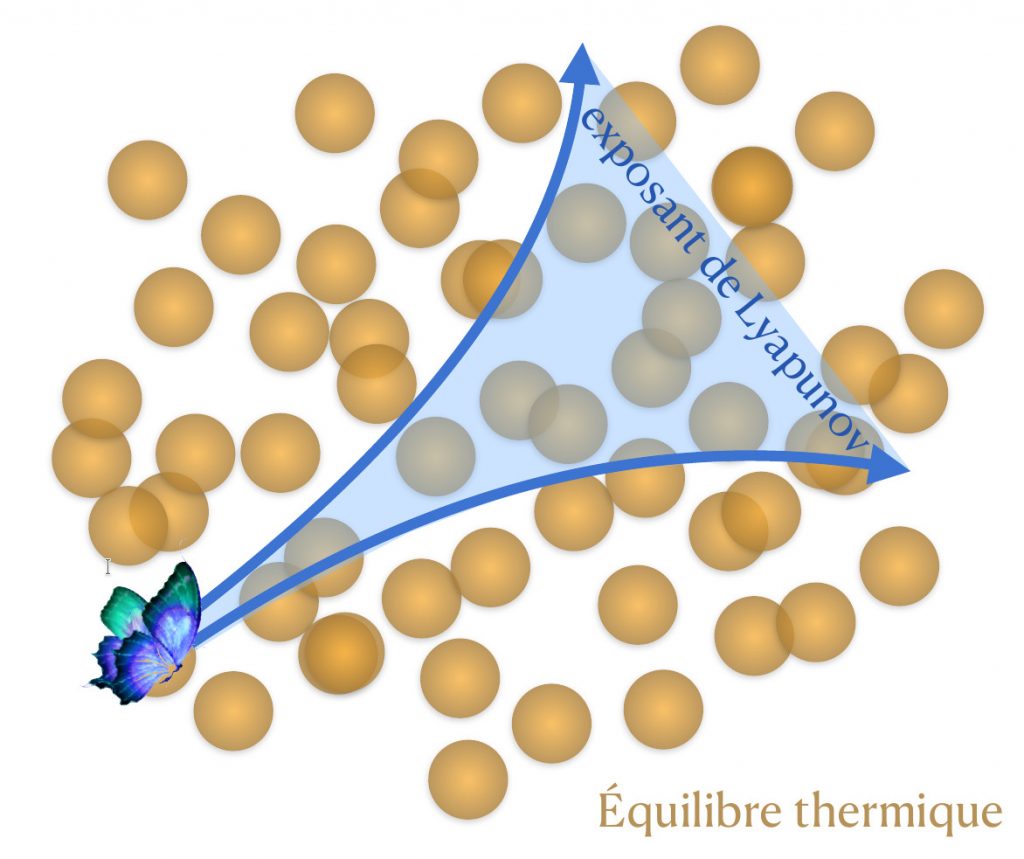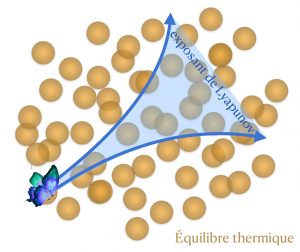
In mathematical terms this concept is characterized by the so-called Lyapunov exponent, a quantity which expresses the rate at which trajectories which start from close-by initial conditions (position and velocity), diverge with time. In quantum mechanics it is difficult to find good diagnostics of chaos and this question has been intensively debated since the beginnings of quantum mechanics. Recently, groundbreaking results from high energy physics [1] showed that quantum mechanics imposes a strict bound on the Lyapunov exponent.
This novel effect has motivated enormous interest over different fields, leaving, however, several outstanding open questions. In our work [2] we show that this bound can be regarded as a consequence of the quantum fluctuation-dissipation theorem, a fundamental result of statistical mechanics which connects the linear response to a perturbation with the equilibrium thermal fluctuations. These findings establish a direct connection between quantum chaos and other thermodynamic properties. They could give rise to new applications to different problems.
In mathematical terms this concept is characterized by the so-called Lyapunov exponent, a quantity which expresses the rate at which trajectories which start from close-by initial conditions (position and velocity), diverge with time. In quantum mechanics it is difficult to find good diagnostics of chaos and this question has been intensively debated since the beginnings of quantum mechanics. Recently, groundbreaking results from high energy physics [1] showed that quantum mechanics imposes a strict bound on the Lyapunov exponent. This novel effect has motivated enormous interest over different fields, leaving, however, several outstanding open questions. In our work [2] we show that this bound can be regarded as a consequence of the quantum fluctuation-dissipation theorem, a fundamental result of statistical mechanics which connects the linear response to a perturbation with the equilibrium thermal fluctuations. These findings establish a direct connection between quantum chaos and other thermodynamic properties. They could give rise to new applications to different problems.
[1] J. Maldacena, S. H. Shenker and D. Stanford, Journal of High Energy Physics 2016(8) (2016).
[2] S. Pappalardi, L. Foini and J. Kurchan, SciPost Phys. 12, 130 (2022).


